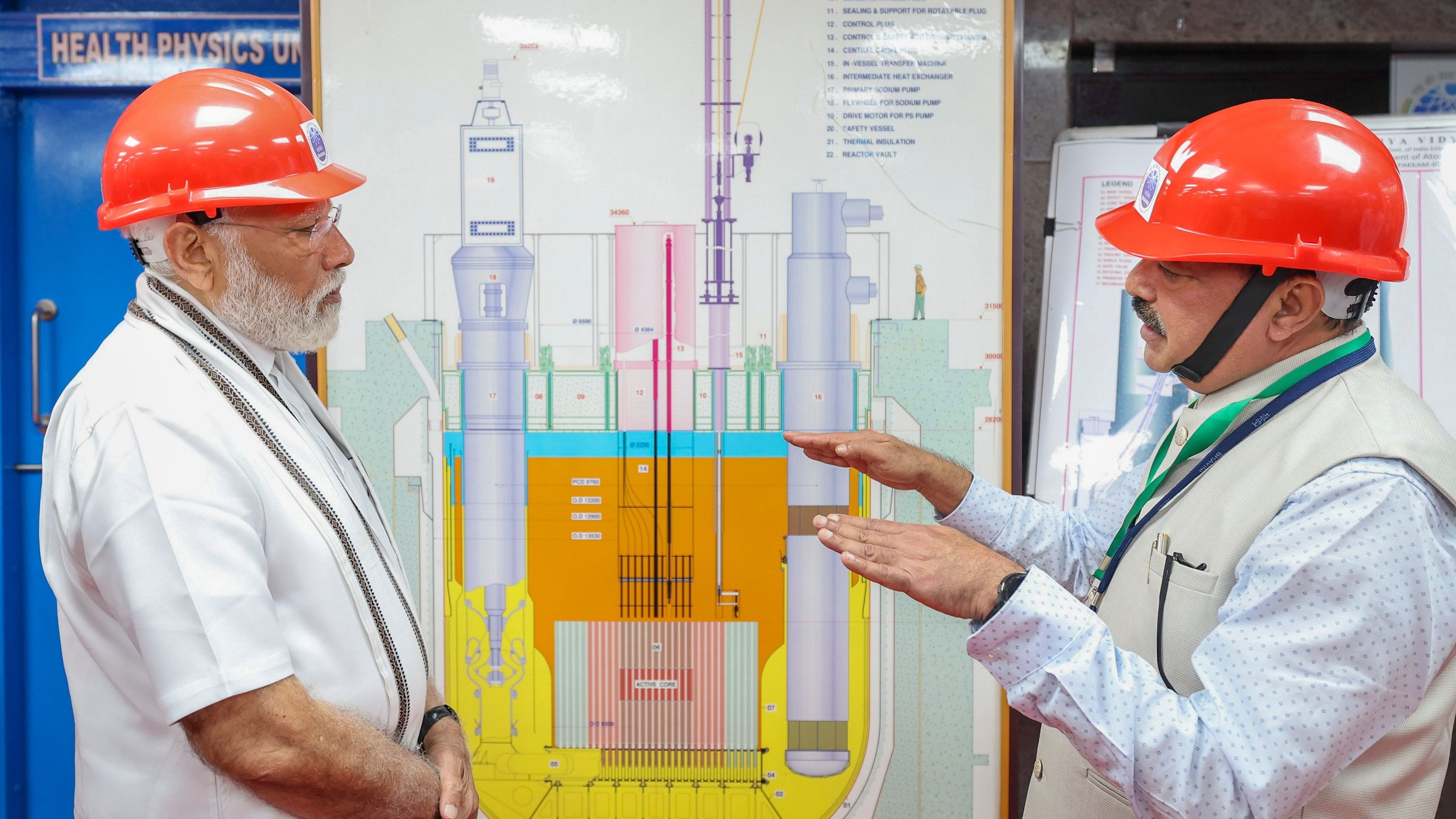
Prime Minister Narendra Modi witnesses initiation of core loading of India's indigenous Prototype Fast Breeder Reactor, at Kalpakkam in Tamil Nadu in March.
Credit: PTI Photo
New Delhi: After years of wait, India’s nuclear regulator on Tuesday allowed the Department of Atomic Energy to operationalise its first big “breeder reactor” that will generate more nuclear fuel than what it consumes.
Once functional, the 500 MW Prototype Fast Breeder Reactor will herald India's entry into the second phase of the three-phase nuclear power programme as envisaged by Homi Bhabha more than 70 years ago.
The Atomic Energy Regulatory Board gave its go ahead to the “first approach to criticality” for the PFBR, located at Kalpakkam near Chennai. The approval came following the final review by the AERB Board on July 27.
“This permission marks a significant step towards operationalisation of the PFBR. The 500 MW sodium-cooled PFBR, being commissioned by BHAVINI, is a significant milestone in the country's nuclear programme,” the AERB says in a statement.
The Bharatiya Nabhikiya Vidyut Nigam Ltd (BHAVINI) is a public sector firm, set up in 2003, to construct and operate the fast breeder reactors. The PFBR is the first one of the lot, but it became a reality nearly 12 years after the initial deadline.
Former DAE Secretary and Atomic Energy Commission chairman Anil Kakodkar termed the PFBR a major advancement in terms of technology by global standards.
"China has a small programme on fast breeders. Japan, France, the US had this (fast breeder reactors), but due to anxiety over nuclear energy, several programmes have been shut down," Kakodkar said.
While there have been safety concerns about the PFBR because of the use of sodium – a hazardous material – as a coolant, the AERB said, it had been carrying out extensive safety review and assessment through a multi-tier safety review mechanism, complemented by periodic inspections and observation by the resident site observer team.
“The board assured itself of the systematic regulatory oversight by the AERB, took cognizance of the detailed submissions presented, safety review outcomes tabled and also visited the plant before granting the permission,” notes the AERB.
The regulatory approval came four months after Prime Minister Narendra Modi visited the PFBR to witness the core loading and interacted with scientists and engineers at the Indira Gandhi Centre for Atomic Research (IGCAR) and BHAVINI.
In the final stage of core loading, fuel sub-assemblies will be fitted into the core of the reactor following which the nuclear fission process will commence. On attaining a sustained nuclear chain reactor – known as criticality – the reactor will be declared operational and a few lower power physics experiments will be conducted.
Subsequently, AERB’s approval will be sought to generate electricity on a commercial scale and connect the reactor to the grid.
Fast breeder reactors “breed” more fissile material than the fuel they consume. They burn plutonium – generated in Uranium-fueled pressurized heavy water reactors and light water reactors – to breed a special type of fissile uranium known as U-233, which is used as fuel.
The FBR will initially use the Uranium-Plutonium Mixed Oxide (MOX) fuel. The Uranium-238 “blanket” surrounding the fuel core will undergo nuclear transmutation to produce more fuel, thus earning the name ‘Breeder’.
The use of another nuclear material known as Thorium-232, which in itself is not a fissile material, as a blanket has also been envisaged in the second stage. By transmutation, Thorium will create fissile Uranium-233 which will be used as fuel in the third stage.
